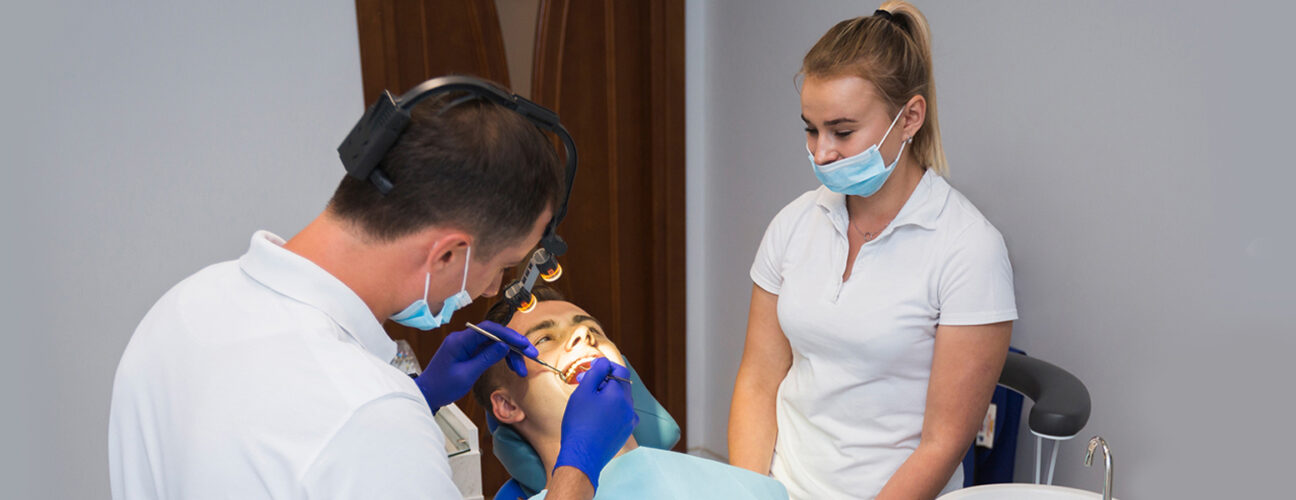Symptoms of Bone Loss in Teeth and What to Do About Them
September 1, 2025Your jawbone plays a silent but powerful role in keeping your teeth secure and your smile confident. When bone loss begins, it can quietly threaten both. Catching the symptoms of bone loss in teeth early is key. In this blog, we’ll walk you through the causes, signs, solutions, and preventive tips to help you protect your oral health.
What Causes Bone Loss in Teeth
Bone loss in your jaw doesn’t happen overnight. It’s often the result of a combination of habits, health issues, and time. Here’s what typically triggers it:
- Periodontal (gum) disease: This is the #1 cause of dental bone loss. When bacteria build up beneath the gums, they ruin the tissue and bone that hold your teeth in place.
- Tooth loss: Did you know that your jawbone stays healthy thanks to the tiny movements of chewing? When a tooth is missing, that stimulation disappears, and the bone begins to become vulnerable and shrink.
- Poor oral hygiene: Skipping brushing or flossing allows plaque to harden into tartar. Over time, this fuels infections that eat away at the bone.
- Smoking and health conditions: Smoking blocks blood flow to gum tissues and slows healing. Add conditions like diabetes or osteoporosis, and your risk goes up.
- Infections or trauma: A sudden blow to the jaw or an untreated dental abscess can also damage bone and surrounding tissue.
Your body constantly breaks down and rebuilds bone. But when that remodelling process is out of sync — due to any of the factors above — you end up with more loss than growth.
Warning Signs and Indicators of Bone Loss in Teeth
So, how do you know if something’s wrong beneath the surface? Pay attention to these signs:
- Gum recession: If your teeth seem longer than they used to, your gums may be pulling back — a classic early sign of bone loss.
- Loose or shifting teeth: If your bite feels off or a tooth wiggles, that tooth might be losing its bony support.
- Changes in your bite: When bone disappears, teeth can drift. You may start to notice that chewing feels uneven or your smile looks different.
- Chronic bad breath or gum swelling: Inflammation and infection don’t just cause odour — they indicate damage brewing below.
- Facial changes: In advanced cases, the jaw shrinks, giving the face a sunken appearance. This is especially noticeable in people missing several teeth.
To spot bone loss early, dentists rely on more than symptoms. X-rays and thorough exams can show bone density changes before you feel a thing. That’s why seeing a local dentist or dentist in Northridge regularly matters.
How Dental Implants Can Help Reverse Bone Loss in Teeth
Think of dental implants as tooth roots that do double duty. Not only do they replace missing teeth, but they also keep your jawbone active and strong.
Here’s how it works:
- The implant post, developed from titanium, is inserted into your jawbone.
- Over a few months, the bone fuses to the post — a process called osseointegration.
- This fusion triggers natural bone regeneration, keeping the area healthy and full.
Compared to dentures or bridges, implants are the only solution that stimulates the jawbone. They don’t just sit on top — they become part of your mouth’s foundation.
But what if you’ve already lost a lot of bone? That’s where bone grafting may come in. A dentist can rebuild the jaw using special graft materials, preparing it for implants later. If you’re from the area and considering getting dental implants in Northridge, CA, ask your provider about your candidacy and whether grafting might be needed first.
Preventing Further Bone Loss in Teeth
You can’t always reverse damage that’s already done, but you can stop it from getting worse. Here’s how:
- Brush and floss like your smile depends on it — because it does. Clean teeth keep gums and bones healthy.
- Visit your dentist twice a year. Routine cleanings remove tartar that you can’t tackle at home, and they help catch bone loss early.
- Quit smoking. It’s a major factor in gum disease and slows healing. Your bone (and your whole body) will thank you.
- Replace missing teeth quickly. Leaving gaps in your smile means the jaw underneath isn’t getting the movement it needs to stay strong.
- Eat for your bones. Include calcium-rich foods, leafy greens, and vitamin D in your diet to support your body’s bone-building efforts.
These small transformation can add up to big results, especially when you combine them with professional dental care.
Final Thoughts
Bone loss in your jaw can pave the way to serious dental problems if ignored. Recognizing the signs early and exploring solutions like dental implants can make all the difference. Don’t wait until symptoms worsen. At Valley All Care Dental, we’re here to help you restore and protect your smile. Schedule your consultation today and take the first step toward lasting oral health.
